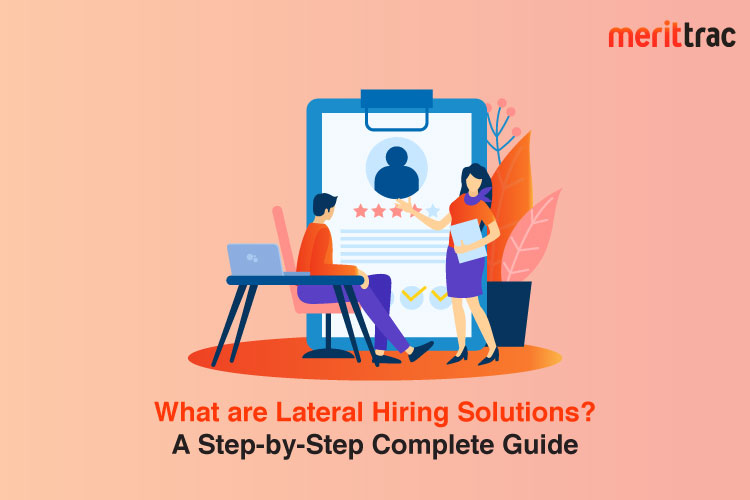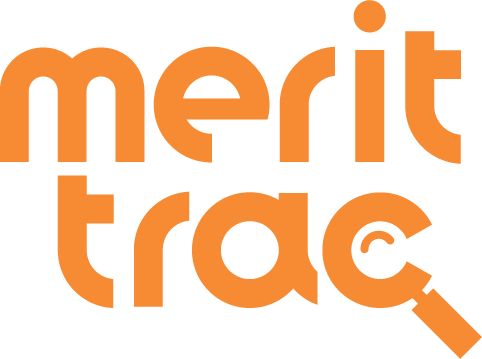
What are Lateral Hiring Solutions? A Step-by-Step Complete Guide
Date: 27/03/2023 | Posted by: MeritTrac | Category: General
Lateral Hiring:
Lateral hiring solutions refer to the process of recruiting employees from other companies or industries to fill positions in your organisation. This type of hiring is commonly used when a company is looking to bring in experienced and skilled individuals to fill a specific role.
Lateral hiring solutions can help companies gain a competitive edge by bringing new perspectives, skills, and experience to their workforce. It can also help fill talent gaps quickly and effectively.
Lateral Recruitment Steps:
Identify the company's needs: Before initiating the lateral recruitment process, the company must first identify its staffing needs. This will help them to create a job description that accurately reflects the required qualifications, experience, and skills.
Identify potential prospects: Once the company has identified its staffing needs, it must begin to identify potential prospects who have the qualifications, experience, and skills required for the position.
Discreetly contact candidates: The next step is to discreetly contact the potential candidates to gauge their interest in the position. This can be done through personal contacts, social media, or professional networks.
Negotiate the offer: Once a suitable candidate has been identified, negotiations for compensation, benefits, and other aspects of the offer can begin. The company should be prepared to negotiate with the candidate to reach an agreement that benefits both parties.
Make an offer: If negotiations are successful, the company can make a formal offer to the candidate. The offer should include all relevant details such as compensation, benefits, job duties, and start date.
Onboard lateral hires strategically: Once the candidate accepts the offer, the company should have a strategic onboarding plan in place. This plan should ensure that the new hire is smoothly integrated into the company culture.
Benefits of Lateral Hiring Solution
Increase Innovation: Lateral hiring solutions bring new perspectives, ideas, and experiences into the organisation, which can increase innovation and creativity. New employees bring fresh perspectives, which can help to identify new opportunities and improve existing processes.
Reducing Training Time: Lateral hiring reduces the need for extensive training, as external hires typically come with pre-existing skills and knowledge. This allows the new employee to quickly integrate into their new role and start making an impact in the organisation.
Increases Efficacy: External hires often bring a proven track record of success in their previous roles, which can increase the efficacy of the organisation. Their experience and skills can help to drive growth and improve productivity.
Strategy for Lateral Hiring Solution
Make a candidate more personable:
Lateral hiring is all about hiring experienced professionals who can bring a fresh perspective to your organisation. One way to make a candidate more personable is to conduct a video interview. You can also ask open-ended questions that encourage them to share their experiences, opinions, and values.
Obtain the candidate's basic information:
Before you start evaluating a candidate's skills, it's essential to gather their basic information such as their name, contact details, current job role, work experience, etc. You can obtain this information by asking them to fill out an online application form or by conducting a brief phone screening.
Essential skills for lateral hiring:
When it comes to lateral recruitment, you need to look for candidates who possess a unique set of skills and experiences that can add value to your organisation. Some essential skills that you should look for in a lateral hire are industry knowledge, leadership skills, communication skills, problem-solving abilities, creativity and adaptability.
Advantages of lateral hiring over traditional hiring:
Reduced training costs: Lateral hires are already experienced in their roles, so they require less training compared to new graduates or entry-level candidates. This can help reduce the costs associated with onboarding and training new employees.
Faster onboarding: Lateral hires can hit the ground running and quickly become productive in their roles. They are already familiar with the industry, so they require less time to learn about the company and its operations.
Access to a larger talent pool: Lateral hiring allows the company to tap into a larger talent pool. This increases the chances of finding a candidate who is the right fit for the company's culture and requirements.
How Does MeritTrac Lateral Hiring Help You Make The Difference?
MeritTrac specialises in assessing candidates' skills and abilities for various organisations. The company offers lateral hiring services that can help organisations to find the right talent for specific roles. MeritTrac's lateral hiring services can help organisations target specific industries or skill sets to find the right candidates. The lateral hiring process can also help organisations save time and money by providing them with a pool of pre-screened candidates.
Conclusion
In this way, lateral hiring can bring many benefits to an organisation, such as the infusion of fresh ideas and perspectives, and the potential for increased productivity and profitability. However, it is important to approach lateral hiring strategically and thoughtfully to ensure the best fit for both the new hire and the organisation.
FAQs:
What does early lateral hires mean?
Early lateral hires refer to the recruitment of experienced professionals from outside the organisation who are brought in at a level higher than entry-level positions.
How does lateral hiring work?
Lateral hiring involves recruiting candidates from outside the organisation to fill roles at the same level or above the current position of the employees. It involves sourcing candidates through job boards, social media, professional networks, and employee referrals, among others.
What is lateral hiring vs campus hiring?
Lateral hiring refers to the recruitment of experienced professionals from outside the organisation to fill critical positions or to bring in specialised skills, whereas campus hiring refers to the recruitment of fresh graduates from colleges and universities to fill entry-level positions within the organisation.
What are the advantages of lateral hiring?
Lateral hiring allows organisations to quickly fill critical positions with experienced professionals who have the necessary skills and expertise. It also reduces the time and cost associated with training and onboarding new employees.


 Sales Hotline: USA: +1 646 916 0939 / Others: +91 80619 14700
Sales Hotline: USA: +1 646 916 0939 / Others: +91 80619 14700


